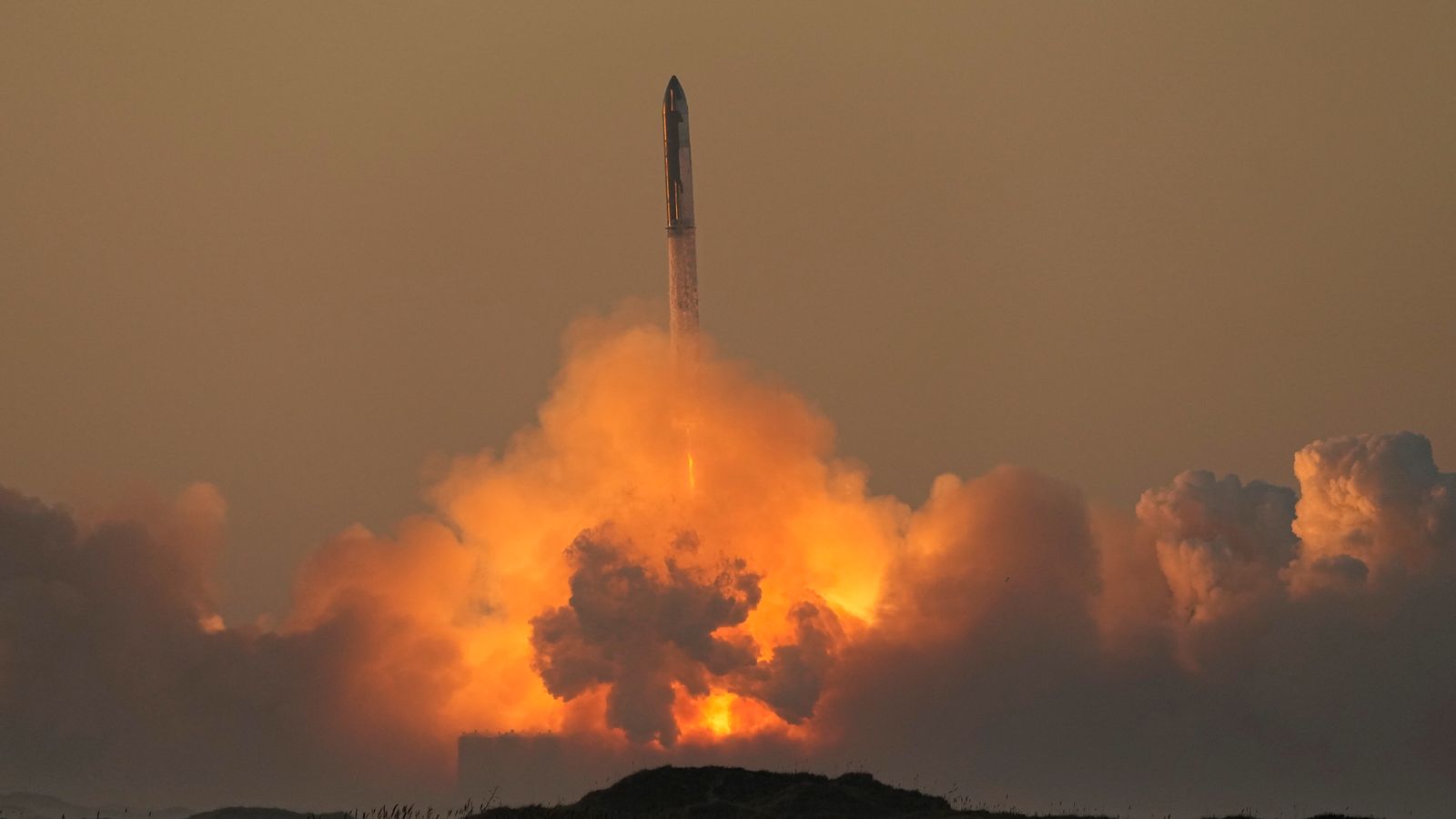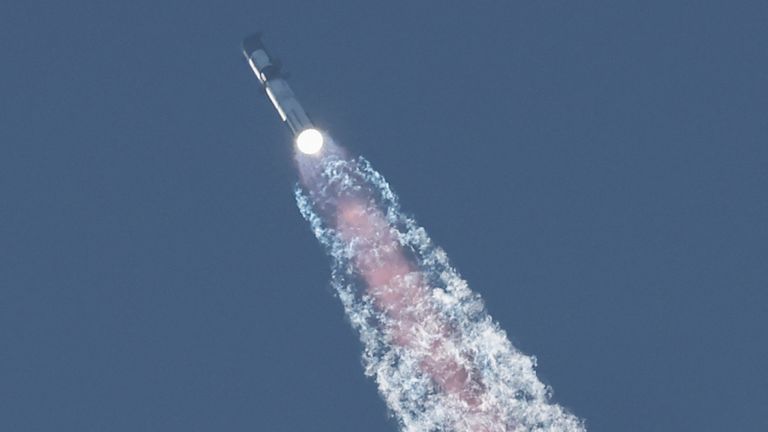SpaceX loses contact with Starship mega rocket after explosions during second test flight


SpaceX has lost contact with its Starship mega rocket following explosions during its second test flight from south Texas.
The two-stage 397ft rocket – the largest and most powerful ever built – arced out over the Gulf of Mexico after blasting off from the Elon Musk-owned company’s launch site near Boca Chica.
SpaceX was aiming for an altitude of 150 miles – just high enough for the spacecraft to travel around the globe before ditching into the Pacific near Hawaii 90 minutes after lift-off.
But while the super heavy first-stage booster appeared to have successfully separated it exploded a short time later.
The main Starship craft continued into space but a few moments later a company broadcaster said mission control had lost contact with the vehicle.
SpaceX’s livestream host John Insprucker said: “We have lost the data from the second stage… we think we may have lost the second stage.”
About eight minutes into the test mission, a camera view tracking the core Starship booster appeared to show an explosion that indicated the vehicle failed at that time on reaching an altitude of 91 miles (148km).
The company said in a post on the social media site X: “With a test like this, success comes from what we learn,
and today’s test will help us improve Starship’s reliability as SpaceX seeks to make life multiplanetary.”
Read more on Sky News:
Telescope sends back first images
NASA launches Psyche mission to rare metal asteroid
Advertisement
The launch had been scheduled for Friday but was delayed by a day for a last-minute change of flight-control hardware.
The Starship’s first flight, in April, lasted just four minutes before an explosion sent the wreckage crashing into the gulf.
Since then, SpaceX had made dozens of improvements to the booster and its 33 engines, as well as the launch pad.
The rocket is a critical part of NASA’s ambitions to return astronauts to the moon.
Mr Musk has also said that Starship could also be used for missions to Mars.